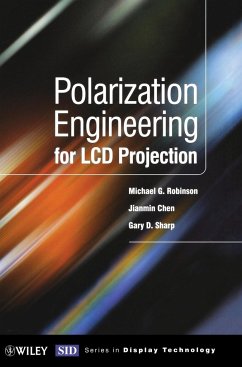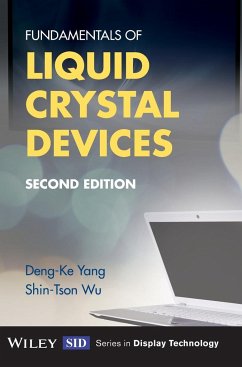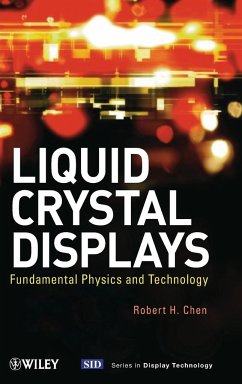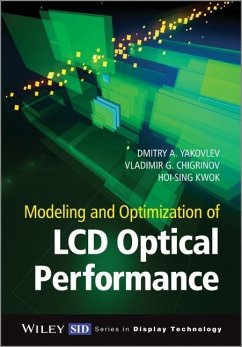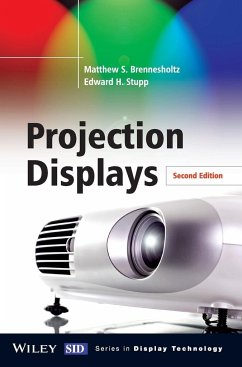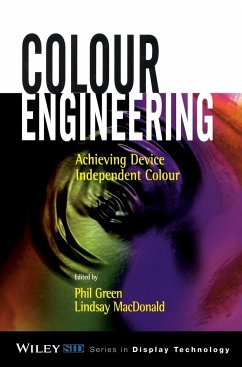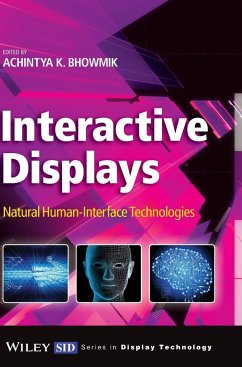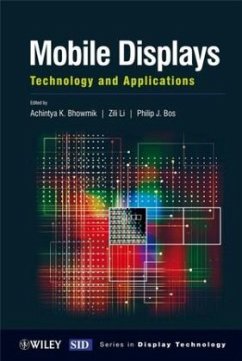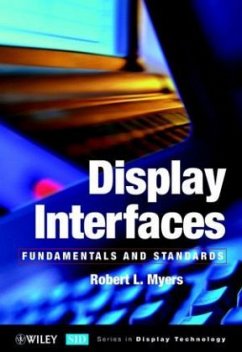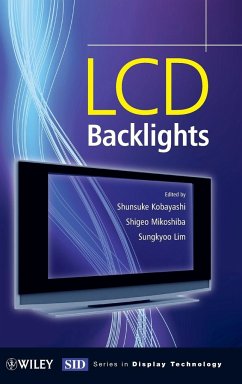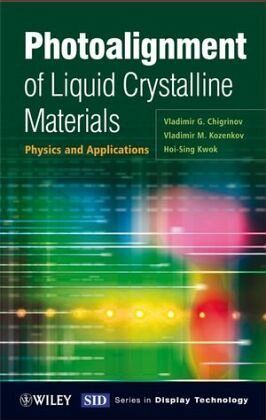
Photoalignment of Liquid Crystalline Materials
Physics and Applications

PAYBACK Punkte
65 °P sammeln!
Photoalignment possesses significant advantages in comparison with the usual 'rubbing' treatment of the substrates of liquid crystal display (LCD) cells as it is a non-contact method with a high resolution. A new technique recently pioneered by the authors of this book, namely the photo-induced diffusion reorientation of azodyes, does not involve any photochemical or structural transformations of the molecules. This results in photoaligning films which are robust and possess good aligning properties making them particularly suitable for the new generation of liquid crystal devices.Photoalignme...
Photoalignment possesses significant advantages in comparison with the usual 'rubbing' treatment of the substrates of liquid crystal display (LCD) cells as it is a non-contact method with a high resolution. A new technique recently pioneered by the authors of this book, namely the photo-induced diffusion reorientation of azodyes, does not involve any photochemical or structural transformations of the molecules. This results in photoaligning films which are robust and possess good aligning properties making them particularly suitable for the new generation of liquid crystal devices.
Photoalignment of Liquid Crystalline Materials covers state-of-the-art techniques and key applications, as well as the authors' own diffusion model for photoalignment. The book aims to stimulate new research and development in the field of liquid crystalline photoalignment and in so doing, enable the technology to be used in large scale LCD production.
Key features:
_ Provides a full examination of the mechanisms of photoalignment.
_ Examines the properties of liquid crystals during photoalignment, with particular reference made to the effect on their chemical structure and stability.
_ Considers the most useful photosensitive materials and preparation procedures suitable for liquid crystalline photoalignment.
_ Presents several methods for photoalignment of liquid crystals.
_ Compares various applications of photoalignment technology for in-cell patterned polarizers and phase retarders, transflective and micro displays, security and other liquid crystal devices.
Through its interdisciplinary approach, this book is aimed at a wide range of practising electrical engineers, optical engineers, display technologists, materials scientists, physicists and chemists working on the development of liquid crystal devices. It will also appeal to researchers and graduate students taking courses on liquid crystals or display technologies.
Photoalignment of Liquid Crystalline Materials covers state-of-the-art techniques and key applications, as well as the authors' own diffusion model for photoalignment. The book aims to stimulate new research and development in the field of liquid crystalline photoalignment and in so doing, enable the technology to be used in large scale LCD production.
Key features:
_ Provides a full examination of the mechanisms of photoalignment.
_ Examines the properties of liquid crystals during photoalignment, with particular reference made to the effect on their chemical structure and stability.
_ Considers the most useful photosensitive materials and preparation procedures suitable for liquid crystalline photoalignment.
_ Presents several methods for photoalignment of liquid crystals.
_ Compares various applications of photoalignment technology for in-cell patterned polarizers and phase retarders, transflective and micro displays, security and other liquid crystal devices.
Through its interdisciplinary approach, this book is aimed at a wide range of practising electrical engineers, optical engineers, display technologists, materials scientists, physicists and chemists working on the development of liquid crystal devices. It will also appeal to researchers and graduate students taking courses on liquid crystals or display technologies.



